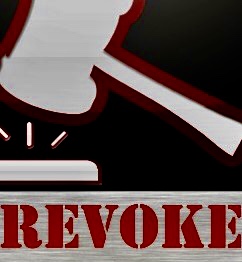
The Supreme Court of Canada in Grant Thornton LLP v New Brunswick 2021 SCC 31 provided new guidelines for when a plaintiff discovers or should have discovered that a claim has arisen, thus starting the limitation clock.
The SCC upheld the trial judge who dismissed a substantial claim for an auditor’s negligence on the basis that the Province had actual or constructive knowledge of the material facts when if received the draft auditor’s report in 2011.
In June 2014 the Province commenced an action for negligence seeking damages but the court held it was filed out of time as per the Limitation of Actions Act( LAA). The draft report was sufficient to draw a plausible inference that the auditor had been negligent.
Since the province did not bring its claim until June 23, 2014, more than the limitation period for negligence of two years , its claim was therefore statute-barred.
THE LAW
The standard to be applied in determining whether a plaintiff has the requisite degree of knowledge to discover a claim under s. 5(2) of the LAA, thereby triggering the two-year limitation period in s. 5(1)(a), is whether the plaintiff has knowledge, actual or constructive, of the material facts upon which a plausible inference of liability on the defendant’s part can be drawn.
This was sufficient to draw a plausible inference that the auditor had been negligent. Since the province did not bring its claim until June 23, 2014, more than two years later, its claim is therefore statute-barred.
In order to properly set the standard, two distinct inquiries are required.
1) The first inquiry asks whether, in determining if a statutory limitation period has been triggered, the plaintiff’s state of knowledge is to be assessed in the same manner as the common law rule of discoverability. Under that rule, a cause of action arises for purposes of a limitation period when the material facts on which it is based have been discovered or ought to have been discovered by the plaintiff by the exercise of reasonable diligence.
The common law rule of discoverability does not apply to every statutory limitation period. Rather, it is an interpretive tool for construing limitations statutes and, as such, it can be ousted by clear legislative language. Assessing whether a legislature has codified, limited or ousted the common law rule is a matter of statutory interpretation. Section 5(1)(a) and (2) of the LAA does not contain any language ousting or limiting the common law rule; rather, it codifies it. This interpretation is supported by the words of s. 5, read in their entire context and in their grammatical and ordinary sense harmoniously with the LAA’s scheme and object, and the intention of the legislature.
Accordingly, as established by the rule of discoverability and the LAA, the limitation period is triggered when the plaintiff discovers or ought to have discovered, through the exercise of reasonable diligence, the material facts on which the claim is based.
2. The second inquiry relates to the particular degree of knowledge required to discover a claim.
A claim is discovered when a plaintiff has knowledge, actual or constructive, of the material facts upon which a plausible inference of liability on the defendant’s part can be drawn. This approach remains faithful to the common law rule of discoverability, which recognizes that it is unfair to deprive a plaintiff from bringing a claim before it can reasonably be expected to know the claim exists. It also accords with s. 5 of the LAA, promotes consistency and ensures that the degree of knowledge needed to discover a claim is more than mere suspicion or speculation. At the same time, it ensures the standard does not rise so high as to require certainty of liability or perfect knowledge. A plausible inference of liability is enough; it strikes the equitable balance of interests that the common law rule of discoverability seeks to achieve.
The material facts that must be actually or constructively known are generally set out in the limitation statute. In the LAA, they are listed in s. 5(2)(a) to (c).
A claim is discovered when the plaintiff has actual or constructive knowledge that: (a) the injury, loss or damage occurred; (b) the injury loss or damage was caused by or contributed to by an act or omission; and (c) the act or omission was that of the defendant. This list is cumulative. In assessing the plaintiff’s state of knowledge, both direct and circumstantial evidence can be used. A plaintiff will have constructive knowledge when the evidence shows that the plaintiff ought to have discovered the material facts by exercising reasonable diligence. Finally, the governing standard requires the plaintiff to be able to draw a plausible inference of liability on the part of the defendant from the material facts that are actually or constructively known. This means that in a negligence claim, a plaintiff does not need knowledge that the defendant owed it a duty of care or that the defendant’s act or omission breached the applicable standard of care. All that is required is actual or constructive knowledge of the material facts from which a plausible inference can be made that the defendant acted negligently.
In the instant case, the province had actual or constructive knowledge of the material facts — namely, that a loss occurred and that the loss was caused or contributed to by an act or omission of the auditor — when it received the draft report from the other firm on February 4, 2011.




